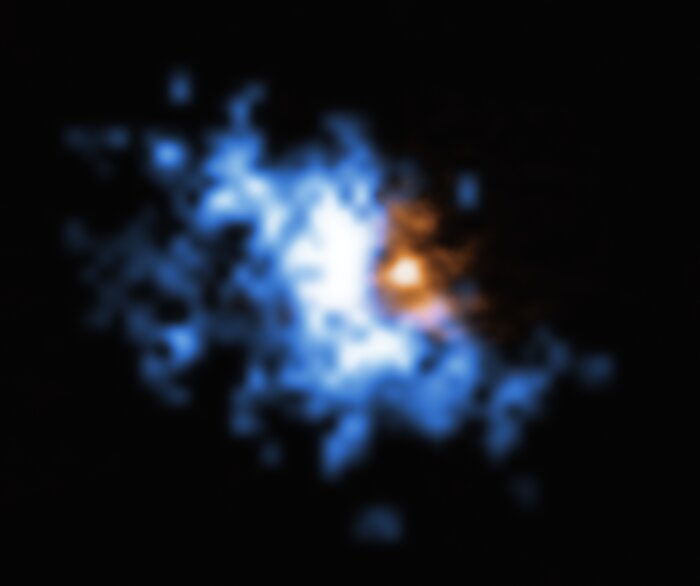With the help of Very Large Telescope from ESO, astronomers have observed reservoirs of cold gas around some of the most primordial galaxies in the Universe. These gas halos are the perfect “food” for supermassive black holes located at the center of these galaxies, which we observe as they were about 12,5 billion years ago. This storehouse of “food” may well explain how these cosmic monsters grew so quickly during a period of the Universe's history known as the Cosmic Dawn.
“We can demonstrate for the first time that primordial galaxies have enough 'food' in their vicinity to be able to make the supermassive black holes at their centers grow while maintaining intense star formation,” says Emanuele Paolo Farina of the Institute Max Planck from Astronomy in Heidelberg, Germany, who led the research work published in the specialist journal The Astrophysical Journal.
"We have thus added a key piece to the puzzle that astronomers are building to understand how cosmic structures formed more than 12 billion years ago."
Astronomers wondered how supermassive black holes managed to grow so large so early in the history of the universe. “The presence of these primordial monsters, with masses several billion times the mass of the Sun, was a mystery,” says Farina, also affiliated with the Max Planck Institute for Astrophysics in Garching bei München, Germany.
This means that the first black holes, which must have formed from the collapse of the first stars, grew very quickly. However, until now, astronomers have not discovered “black hole food” — that is, gas and dust — in quantities large enough to explain this rapid growth.
To further complicate the situation, observations obtained previously with the ALMA (Atacama Large Millimeter/submillimeter Array) revealed a huge amount of dust and gas in these early galaxies, but that appeared to essentially trigger very intense star formation, suggesting that there might be very little material left to fuel a black hole.
To unravel this mystery, Farina and colleagues used the instrument MUSE Photo Studio mounted on Very Large Telescope from ESO (VLT), installed in the Chilean Atacama Desert, to study quasars — extremely luminous objects located at the center of massive galaxies and fed by supermassive black holes.
This study observed 31 quasars seen as they were more than 12,5 billion years ago, at a time when the Universe was still very young, just 870 million years old. It is one of the largest samples of such primordial quasars in the history of the Universe to be studied.
Astronomers have discovered that 12 of these quasars are surrounded by huge reservoirs of gas: halos of dense, cold hydrogen gas that extend up to 100 light-years away from central black holes, with billions of solar masses.
The team also found that these gas halos are tightly bound to galaxies, thus providing them with a perfect “food” source to support both black hole growth and intense star formation.
This work was made possible thanks to the extreme sensitivity of the MUSE instrument (Multi Unit Spectroscopic Explorer) mounted on ESO's VLT, which Farina describes as “decisive” in the study of quasars. “With just a few hours of observation per target, we were able to investigate the surroundings of the biggest and hungriest black holes present in the early Universe,” adds Farina.
Although quasars are very bright, the gas reservoirs that surround them are much harder to observe. Still, MUSE managed to detect the faint glow of hydrogen gas in the halos, allowing astronomers to finally discover these “food” deposits that fueled supermassive black holes in the early Universe.
In the near future, the Extremely Large Telescope ESO's (ELT) will help scientists reveal even more details about galaxies and supermassive black holes in the first two billion years after the Big Bang. “With the ELT we will be able to look even deeper into the early Universe and discover many more of these gas nebulae,” concludes Farina.
Author European Southern Observatory
Science in the Regional Press – Ciência Viva
© 2019 – Science in the Regional Press / Ciência Viva



















Comments